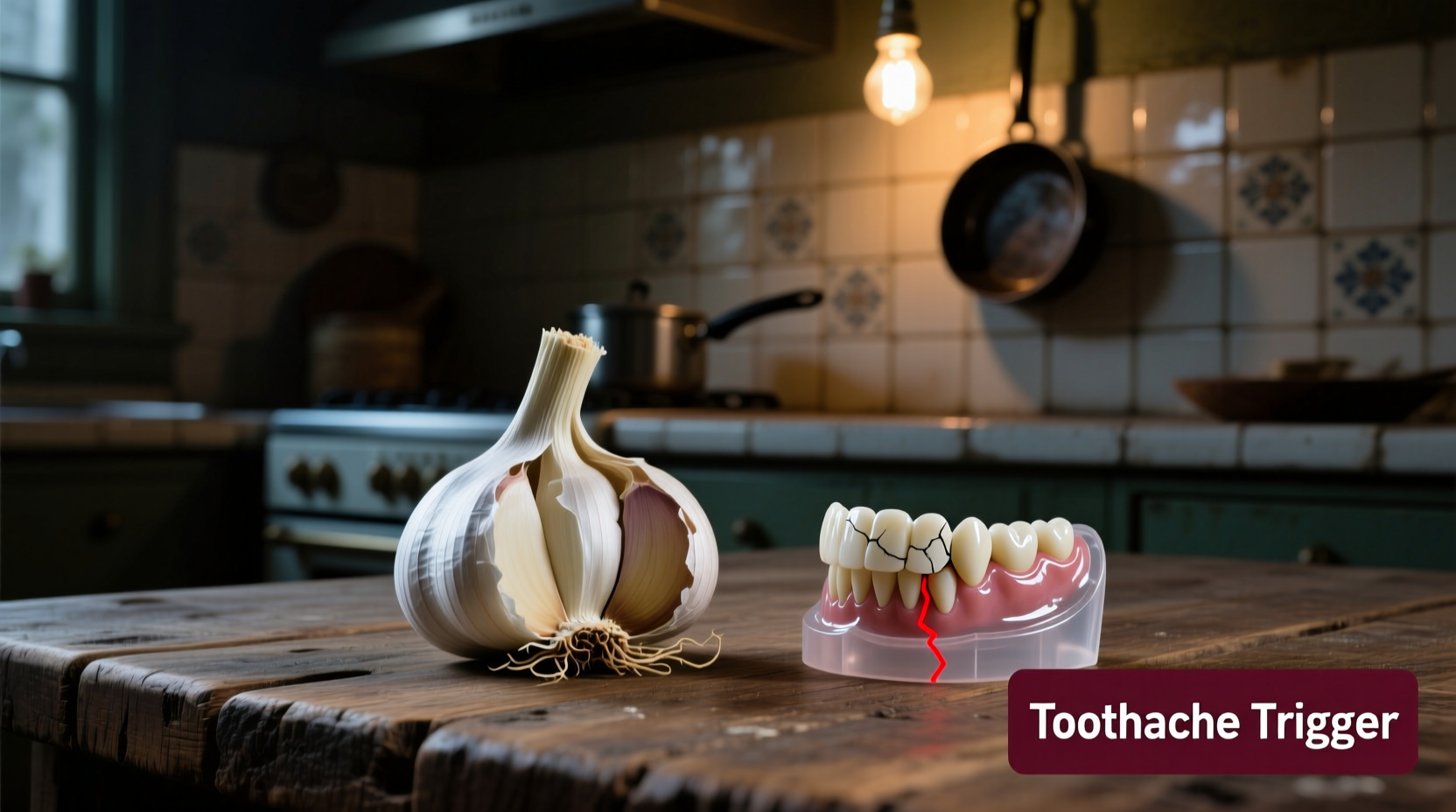The Science Behind Garlic's Potential Toothache Relief
When you crush or chop garlic, it releases allicin—the active compound responsible for its distinctive smell and potential health benefits. According to research published in the Journal of Antimicrobial Chemotherapy, allicin demonstrates significant antibacterial activity against common oral pathogens including Streptococcus mutans, a primary contributor to tooth decay and associated pain.
While garlic isn't a replacement for dental treatment, its temporary pain-relieving properties come from two mechanisms:
- Antimicrobial action—reducing bacteria that cause infection-related pain
- Mild numbing effect—creating temporary sensation reduction at the application site
| Natural Remedy | Effective Against | Time to Relief | Duration of Effect |
|---|---|---|---|
| Garlic (crushed) | Bacterial infections | 15-20 minutes | 1-2 hours |
| Salt water rinse | Swelling, minor irritation | 5-10 minutes | 30-60 minutes |
| Clove oil | General tooth pain | 2-5 minutes | 1-3 hours |
How to Use Garlic for Temporary Toothache Relief
For those seeking immediate, temporary relief while waiting for a dental appointment, follow these evidence-based methods:
Method 1: Direct Application (Most Effective)
- Peel and crush one fresh garlic clove to activate allicin
- Apply the crushed garlic directly to the affected tooth and surrounding gum
- Leave in place for 15-20 minutes (no longer to avoid tissue irritation)
- Rinse thoroughly with warm salt water
Method 2: Garlic Oil Infusion
For those with sensitive gums, create a milder solution:
- Mix crushed garlic with 1 teaspoon of olive oil
- Let sit for 10 minutes to create garlic-infused oil
- Apply a small amount to a cotton ball and hold against the painful area

When Garlic Won't Help (Critical Boundaries)
Understanding the limitations of garlic for toothache is crucial for your dental health. According to the American Dental Association, home remedies like garlic should never replace professional care in these situations:
- Severe swelling extending to your face or neck
- Fever accompanying tooth pain (indicates spreading infection)
- Pain lasting more than 48 hours despite home treatment
- Visible pus around the tooth or gum line
- Difficulty swallowing or breathing
Research from the National Institute of Dental and Craniofacial Research shows that untreated dental infections can lead to serious complications within 72 hours. Garlic may provide temporary relief for minor sensitivity, but it cannot address underlying issues like cavities, abscesses, or cracked teeth.
Complementary Natural Relief Methods
For enhanced temporary relief, combine garlic with these evidence-backed approaches:
- Warm salt water rinse—1/2 teaspoon salt in 8oz warm water, swish for 30 seconds (reduces bacteria and inflammation)
- Cold compress—applied externally to reduce swelling (15 minutes on, 15 minutes off)
- Peppermint tea bag—cooled and applied to the area (contains mild numbing menthol)
Avoid placing aspirin directly on gums—it can cause chemical burns. Also avoid extremely hot or cold applications directly on the tooth, which can worsen sensitivity.
When to See a Dentist Immediately
While natural remedies provide temporary comfort, the Mayo Clinic emphasizes that persistent tooth pain requires professional evaluation. Schedule an appointment immediately if:
- Pain continues beyond 24 hours of home treatment
- You notice a pimple-like bump on your gum (sign of abscess)
- Existing dental work (filling, crown) feels loose
- Pain wakes you from sleep (indicates advanced inflammation)
Remember: Temporary relief methods address symptoms, not causes. Only a dentist can diagnose and treat the underlying condition causing your toothache.
Preventing Future Toothaches
While garlic may help during emergencies, prevention is always better than treatment. Incorporate these evidence-based practices:
- Floss daily to remove plaque between teeth where brushes can't reach
- Use fluoride toothpaste to strengthen enamel
- Limited consumption of acidic foods and beverages that erode enamel
- Regular dental checkups every 6 months (or as recommended by your dentist)











 浙公网安备
33010002000092号
浙公网安备
33010002000092号 浙B2-20120091-4
浙B2-20120091-4